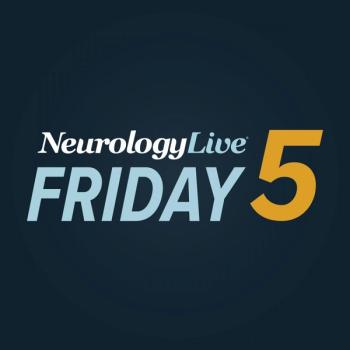
Survey Data Highlights Real-World Use of Rimegepant for Short-Term Migraine Prevention
Key Takeaways
- Rimegepant is effective for short-term prevention in patients with predictable migraine triggers, offering flexibility and targeted relief.
- STP users are demographically distinct, with higher male and Hispanic representation, employment rates, and fewer comorbidities.
A recent survey reveals rimegepant's effectiveness for short-term migraine prevention, highlighting user demographics, triggers, and treatment strategies.
A cross-sectional U.S. survey evaluating real-world use of rimegepant (Nurtec ODT; Biohaven) in adults with migraine suggests that short-term prevention (STP) is a flexible and practical treatment strategy, particularly for patients with predictable migraine patterns and triggers. The survey also identified demographic groups and usage characteristics among individuals using rimegepant for STP, acute-only use, and long-term prevention (LTP).
Of the 425 patients surveyed, 152 were STP users, 190 were acute-only users, and 83 were LTP users. STP users represented a demographically distinct group, as they were more likely to be male (35.5%) compared with acute-only (19.5%) and LTP users (20.5%). A higher proportion of STP users identified as Hispanic or Latino (19.7%) compared with 12.6% of acute-only and 9.6% of LTP users. They were also more likely to be employed either full or part-time (73.7%) and to have completed graduate school (19.1%).1
Comorbidities were less common in STP users; gastrointestinal ulcer or GI bleeding was reported in only 3.3% of STP users, compared with 14.5% of LTP users. Rates of asthma (19.1%) and osteoarthritis (8.6%) were also lower in STP users compared with LTP users (27.7% and 20.5%, respectively).1
Led by Teshamae Monteith, MD, FAHS, FAAN, associate professor of clinical neurology and chief of the headache division in the department of neurology at the University of Miami Miller School of Medicine, STP users also demonstrated different lifestyle characteristics. A greater proportion of this group reported cigarette smoking (34.2%), and alcohol consumption (71.7%) compared with acute-only and LTP users. Investigators concluded that this may suggest different social or behavioral contexts in which STP is used1
In addition to demographic and clinical profiles, the survey looked into common migraine triggers among STP users. Stress was the most frequently reported trigger (69.1%), followed by disrupted sleep (46.7%), noise (43.4%), and light exposure (40.8%). In addition, menstrual cycle-related triggers were reported by 30.9% of women in the STP group.1
Participants also reported scenarios in which they use rimegepant for prevention. The most common reason for beginning STP was physician recommendation (61.8%), followed by other motivating factors which included reducing frequency (46.7%) or severity (46.1%) of migraine attacks. STP was frequently used situationally as 64.5% took rimegepant after an initial migraine to prevent recurrence, 40.8% during social events, and 40.8% during vacations or leisure periods.1
Across all user groups, patients had an average of 6.9 migraine days in the prior 30 days; 6.4 days for STP users, 7.8 days for LTP users, and 6.9 days for acute-only users. This indicated that patient categorization was not based strictly on migraine burden but maybe patient preferences or provider recommendations.1
Rimegepant is a small-molecule calcitonin gene-related peptide (CGRP) receptor antagonist, or “gepant,” designed to block the activity of CGRP, a neuropeptide that’s thought to be a part of the initiation and maintenance of migraine pain. During migraine attacks, activation of the trigeminovascular system triggers CGRP release, leading to vasodilation, neurogenic inflammation, and sensitization of pain pathways. Rimegepant prevents these downstream effects by binding to the CGRP receptor, a complex composed of the calcitonin receptor-like receptor (CLR) and receptor activity modifying protein 1 (RAMP1), thereby disrupting the CGRP signaling cascade.2
This mechanism not only provides acute relief but also makes rimegepant suitable for short-term prevention in individuals with predictable migraine triggers, as demonstrated in the real-world survey findings. By temporarily blocking CGRP activity during high-risk periods like social events, travel, or menstrual cycles, rimegepant potentially offers a flexible, targeted strategy to prevent attacks without the need for continuous daily medication.2
Rimegepant has also demonstrated safety in lactating women. In a phase 1, open-label study published in Breastfeeding Medicine, researchers evaluated the pharmacokinetics of a single 75 mg dose of rimegepant in healthy lactating women. Overall, results showed minimal excretion into human milk and no clinically significant effects on maternal vital signs, suggesting that rimegepant may be a viable acute treatment option for migraine in breastfeeding individuals, although broader studies are necessary to confirm it’s long-term safety.2
While rimegepant is currently FDA approved for both acute and preventive use, its application for short-term prevention remains less defined. Further research is needed to evaluate outcomes associated with STP, particularly its potential to reduce migraine frequency, improve quality of life, and limit time loss due to migraine symptoms.
Additional research is also warranted to confirm these observations across broader populations and to assess long-term impact and safety in patients using rimegepant for STP. A better understanding of patient criteria, timing, and dosing strategies will help define the role of STP in migraine management.
REFERENCES
1.Monteith T. Real-world use and patient profiles of rimegepant for short-term prevention among patients with migraine: insights from a US patient survey. American Headache Society 67th Annual Scientific Meeting; June 19–22, 2025; Minneapolis, MN. P-329.
2.Edvinsson L. Rimegepant for the acute and preventive treatment of migraine: a narrative review of the evidence. Expert review of neurotherapeutics. 2024;24(12):1141-1155. doi:https://doi.org/10.1080/14737175.2024.2434079
Newsletter
Keep your finger on the pulse of neurology—subscribe to NeurologyLive for expert interviews, new data, and breakthrough treatment updates.



































